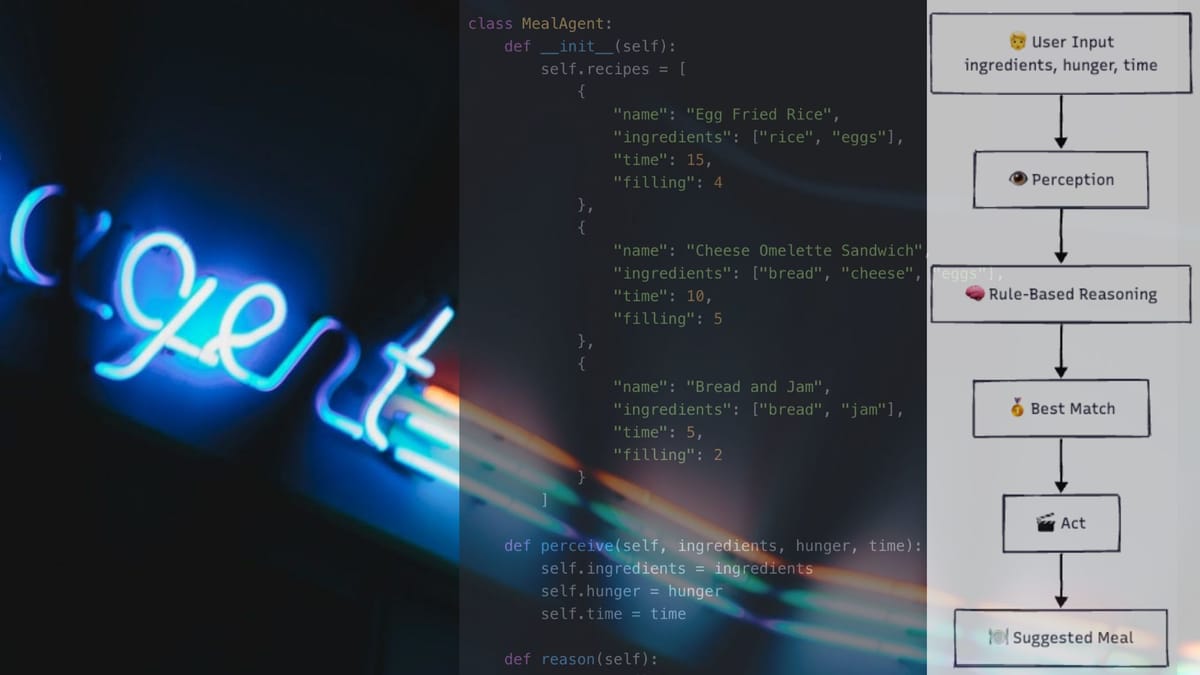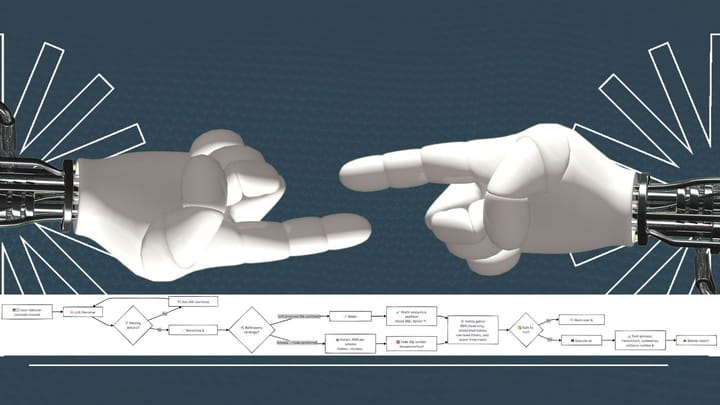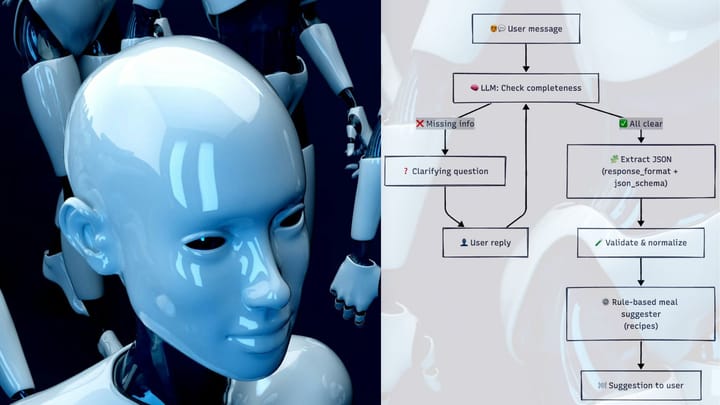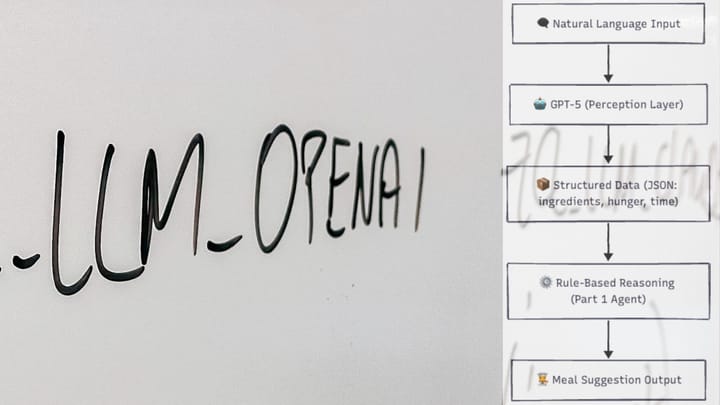Simple Decision-Making Agent in Python - Building Agents Part 1
Learn how to build a simple rule-based decision-making agent in Python. Perfect for beginners, this is Part 1 of the Building Agents series and includes code, logic flow, and real-world analogies.

What Is an Agent?
An agent is something that can:
- Observe its environment
- Think based on rules or logic
- Act to solve a problem or achieve a goal
This pattern is found everywhere, from humans to AI systems to even your washing machine!
Real-World Analogy:
Imagine you're deciding what to eat. You look into the fridge (observe), see what ingredients you have (think), and choose to make an omelette (act).
That is how a simple agent works.
What Is a Simple Decision-Making Agent?
This type of agent uses rules or conditions to make decisions.
- It does not learn or adapt
- It’s fast and predictable
- Perfect for situations where the rules are clear
Examples:
- A thermostat: If temperature < 20°C, turn on the heater
- A traffic light: If 60 seconds pass, switch the lights
- A meal picker: If you're very hungry and have eggs, make an omelette
How the Agent Works

Let’s Build One in Python!
Problem:
We want an agent to suggest a meal based on:
- What ingredients do we have
- How hungry we are (1 to 5)
- How much time do we have
Rules:
- If you have eggs + rice and time > 10 min → make egg fried rice
- If you have bread + cheese + eggs and time ≤ 10 min → make a cheese omelette sandwich
- If you have bread + jam and time ≤ 5 min → make bread and jam
Python Code:
class MealAgent:
def __init__(self):
self.recipes = [
{
"name": "Egg Fried Rice",
"ingredients": ["rice", "eggs"],
"time": 15,
"filling": 4
},
{
"name": "Cheese Omelette Sandwich",
"ingredients": ["bread", "cheese", "eggs"],
"time": 10,
"filling": 5
},
{
"name": "Bread and Jam",
"ingredients": ["bread", "jam"],
"time": 5,
"filling": 2
}
]
def perceive(self, ingredients, hunger, time):
self.ingredients = ingredients
self.hunger = hunger
self.time = time
def reason(self):
matches = []
for recipe in self.recipes:
if recipe["time"] <= self.time and all(i in self.ingredients for i in recipe["ingredients"]):
matches.append(recipe)
if not matches:
return "Sorry, no suitable meal."
matches.sort(key=lambda x: abs(x["filling"] - self.hunger))
return matches[0]["name"]
def act(self):
suggestion = self.reason()
print(f"👩🍳 Suggested Meal: {suggestion}")
How to Use It
agent = MealAgent()
agent.perceive(["bread", "cheese", "eggs"], hunger=5, time=10)
agent.act()
Output:
👩🍳 Suggested Meal: Cheese Omelette Sandwich
Comparison with Smarter Agents
Simple Agent
Uses fixed rules. It's fast, predictable, and easy to understand.
- ❌ Cannot handle natural language input.
- ✅ Very cheap to run and easy to debug.
- ❌ Does not adapt or learn
GPT Agent
Uses a language model to understand messy, natural language input.
- ✅ Understands vague inputs like “I’m kinda hungry”.
- ❌ Doesn’t always explain why it made a choice.
- 🔶 Slightly expensive depending on usage.
- ❌ Doesn’t use rules; not always predictable
Clarifying Agent (Hybrid)
Combines GPT and rule-based logic.
- ✅ Understands natural input via GPT.
- ✅ Asks follow-up questions if data is unclear.
- ✅ Uses rule-based reasoning once inputs are clear.
- 🔶 More accurate and human-like, but higher cost and complexity
Recap
- A simple agent is rule-driven and easy to build
- Great for teaching or small tasks
- In this article, we built a meal agent that suggests meals based on rules
Next up: We’ll build the same agent but with GPT understanding plain text like
"I'm kinda hungry and I have rice and eggs."
Read: LLM-Powered Agent in Python - Building Agents Part 2
Stay tuned!




Comments ()